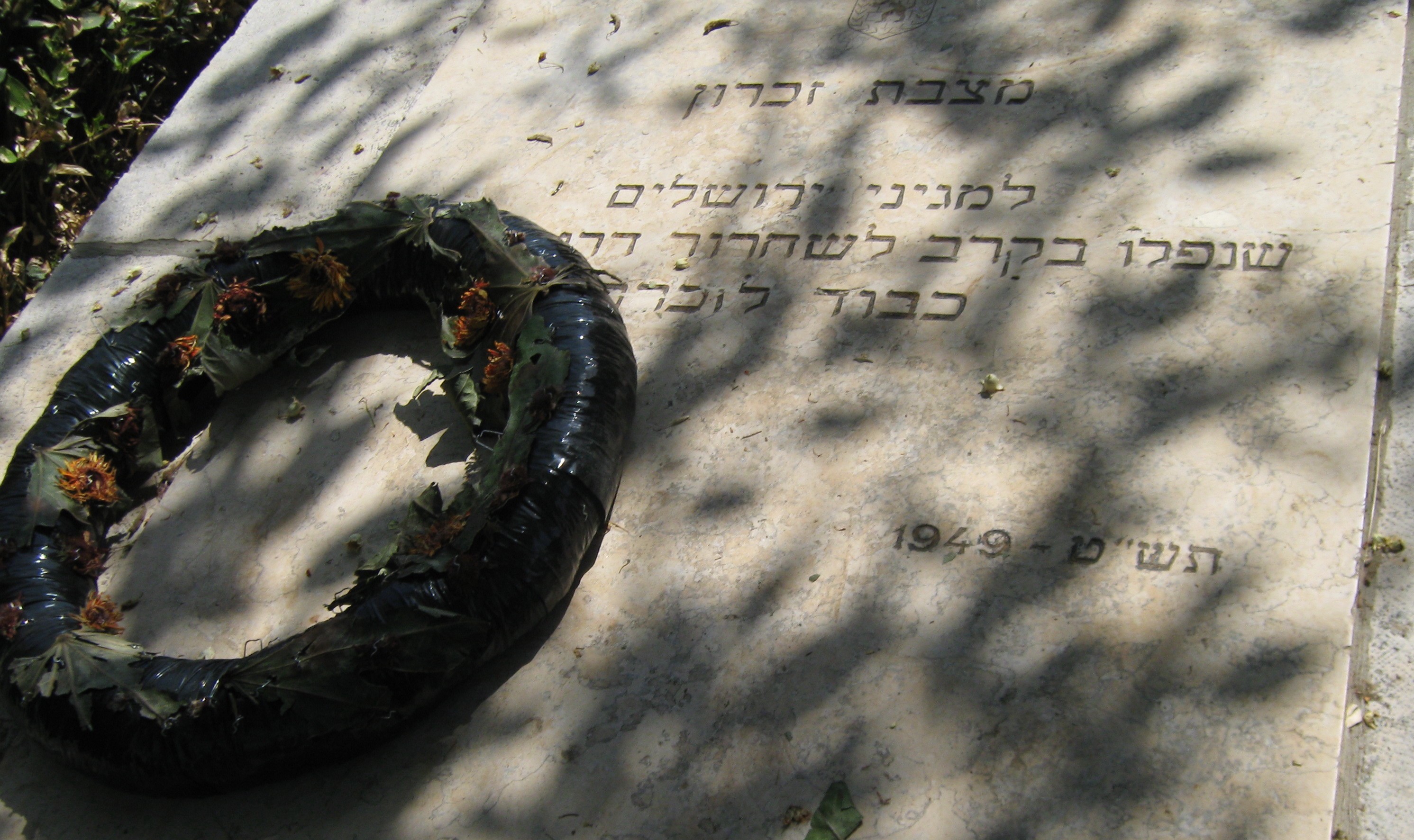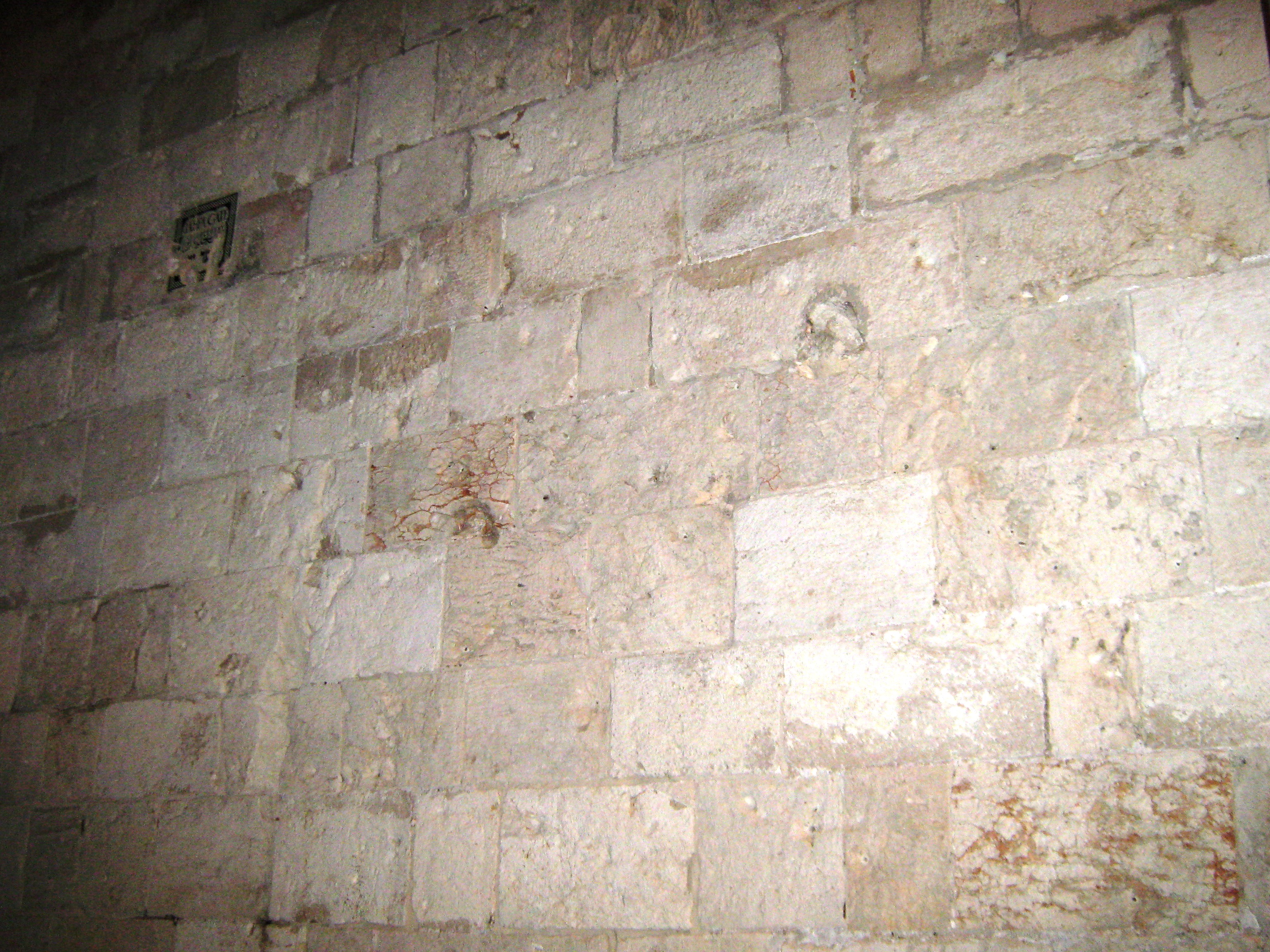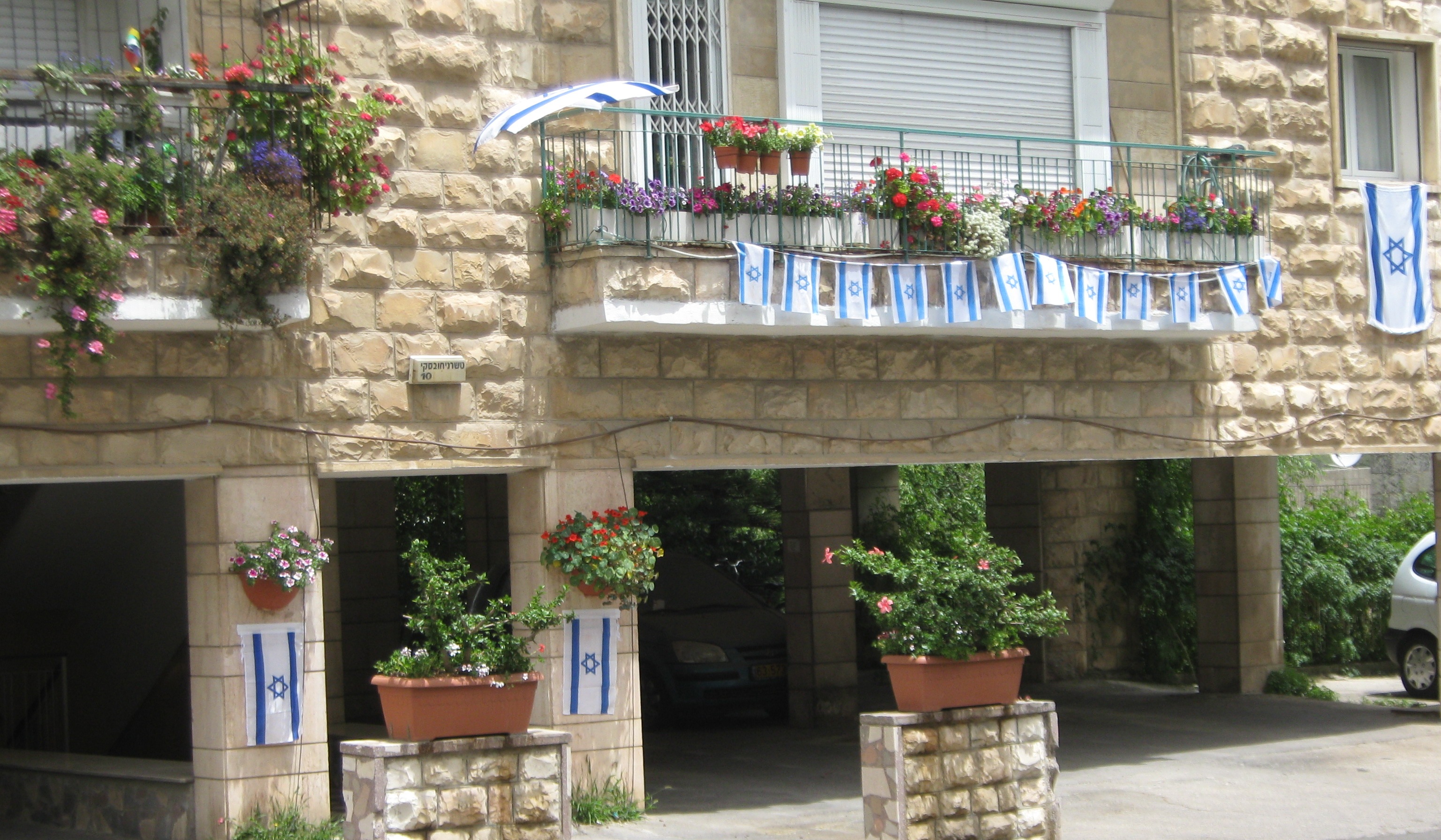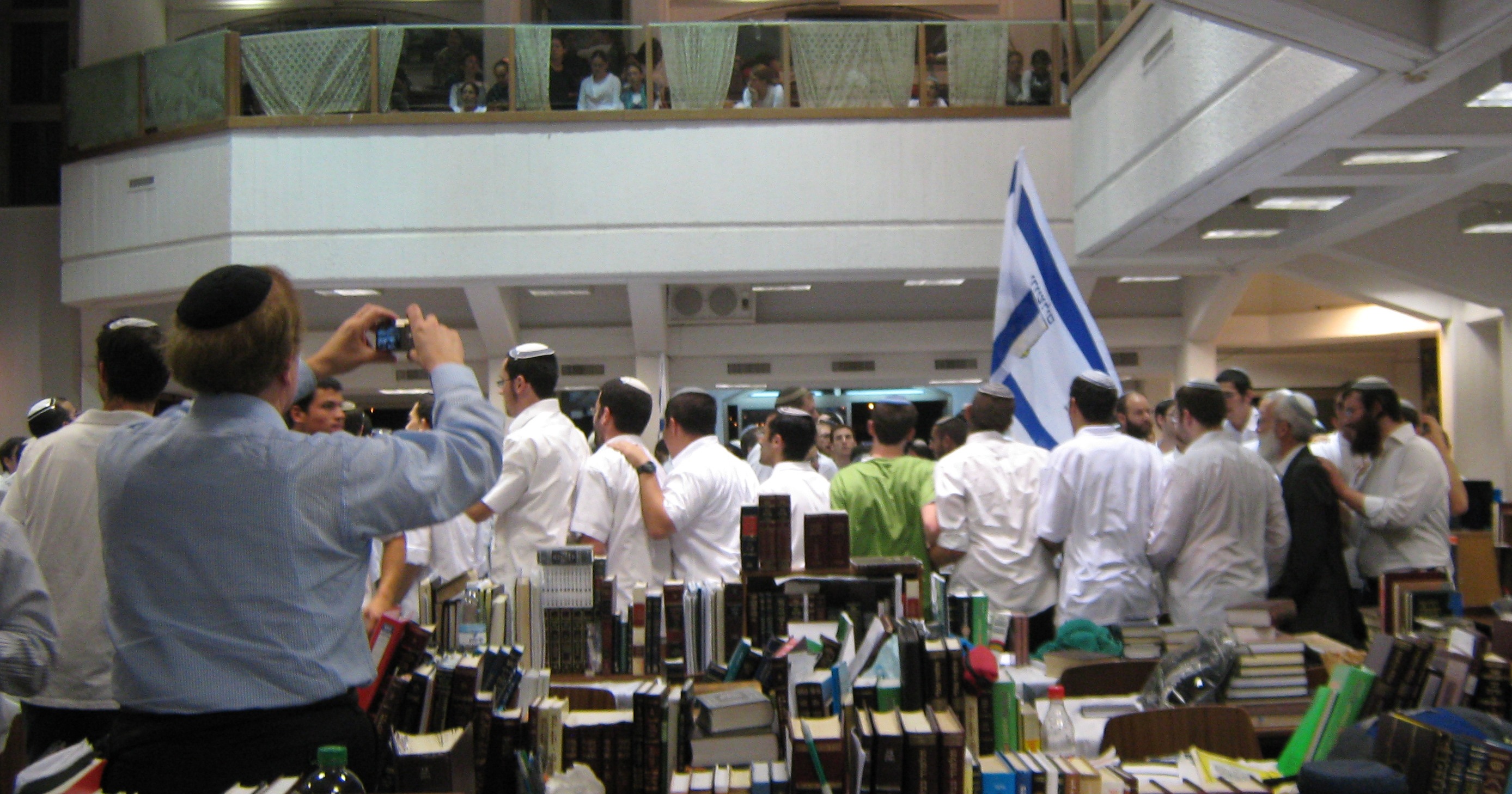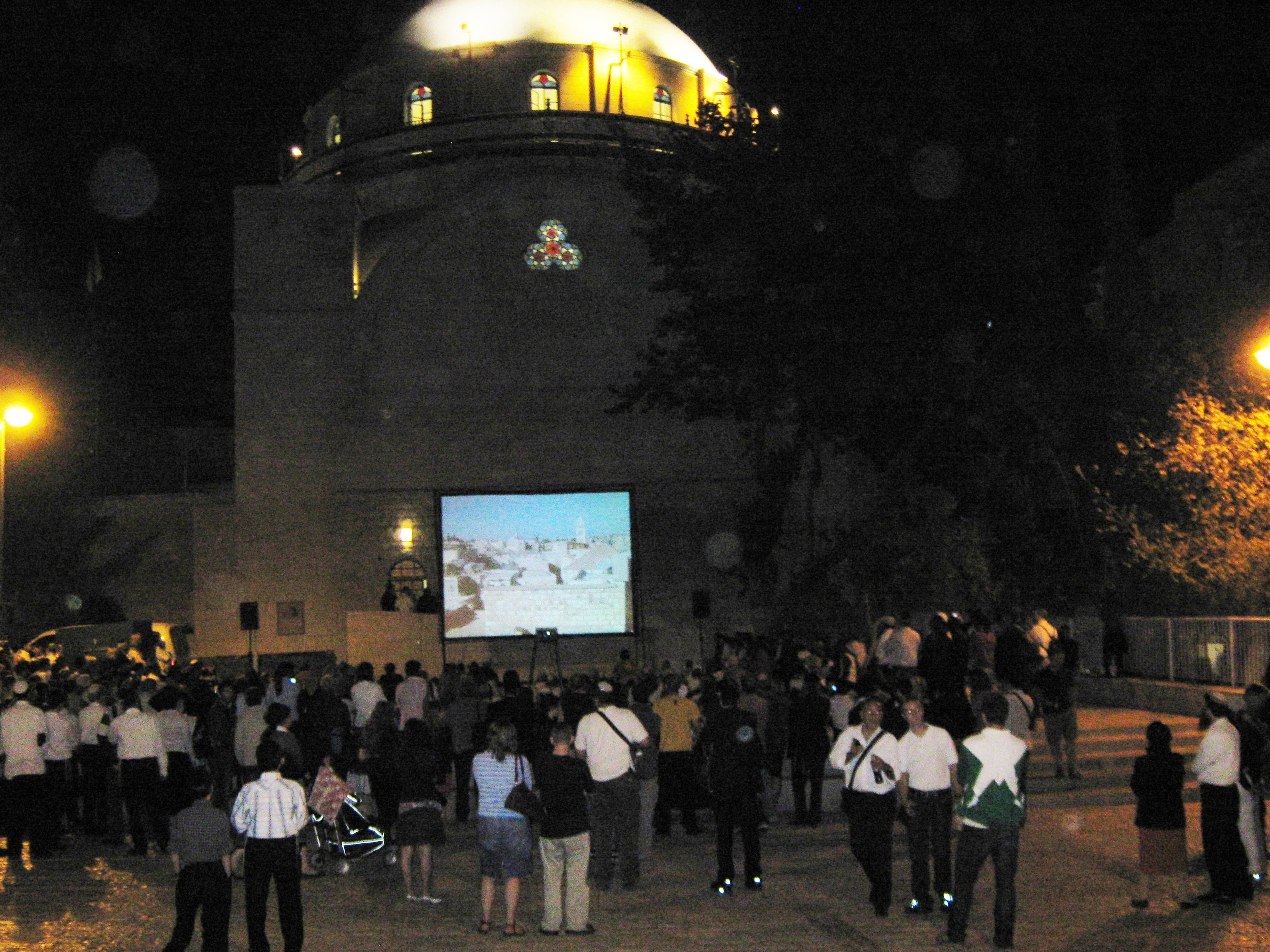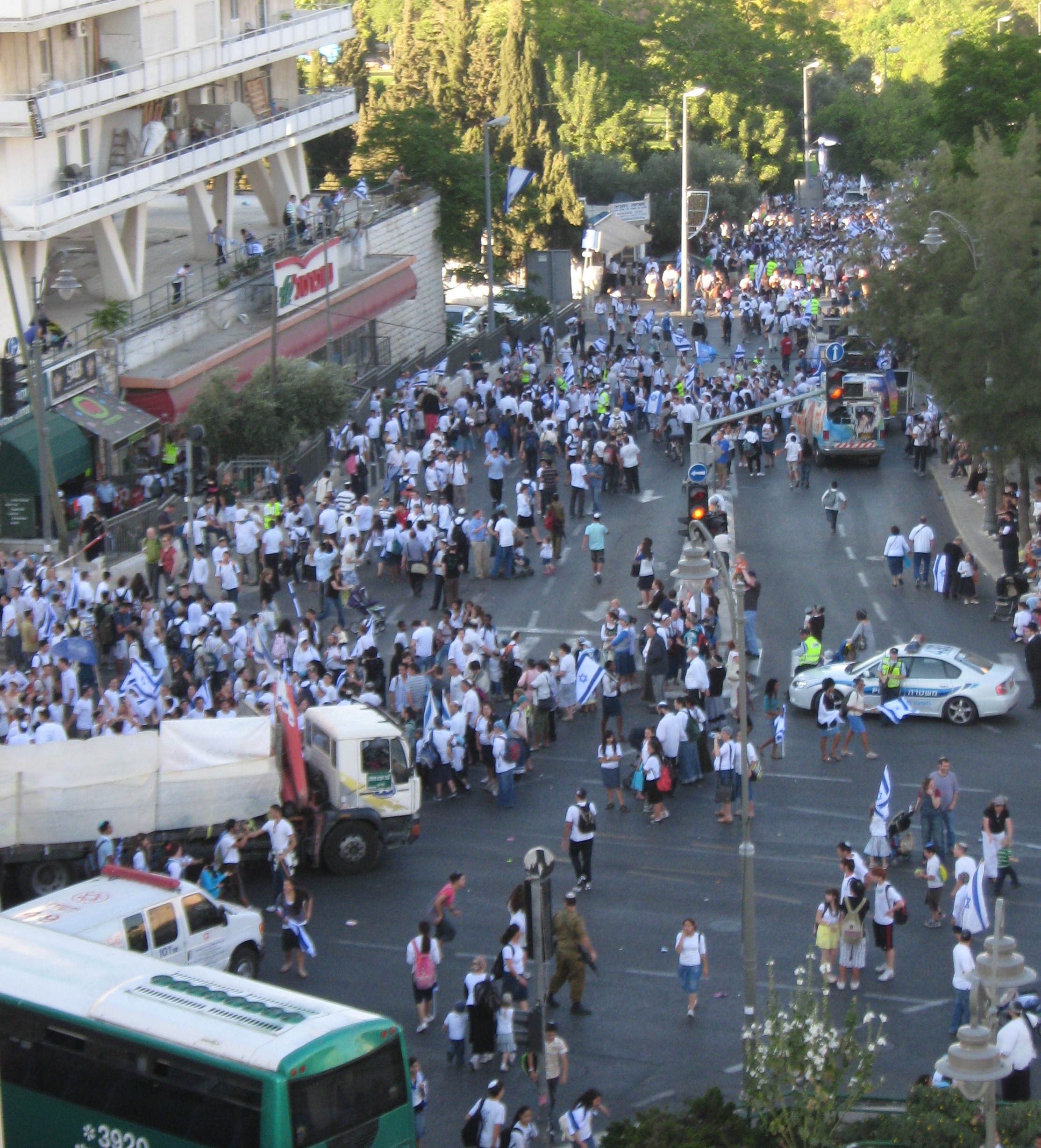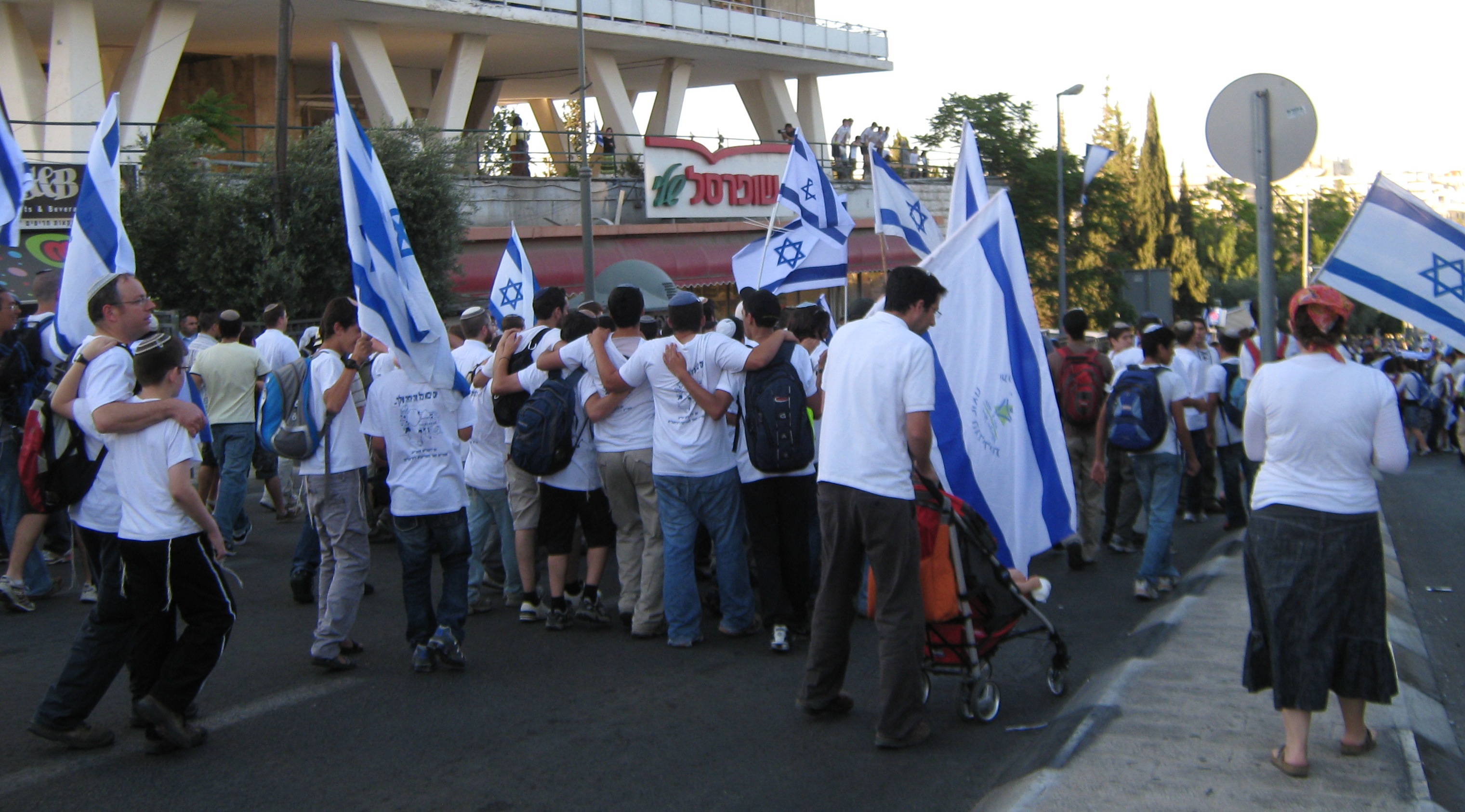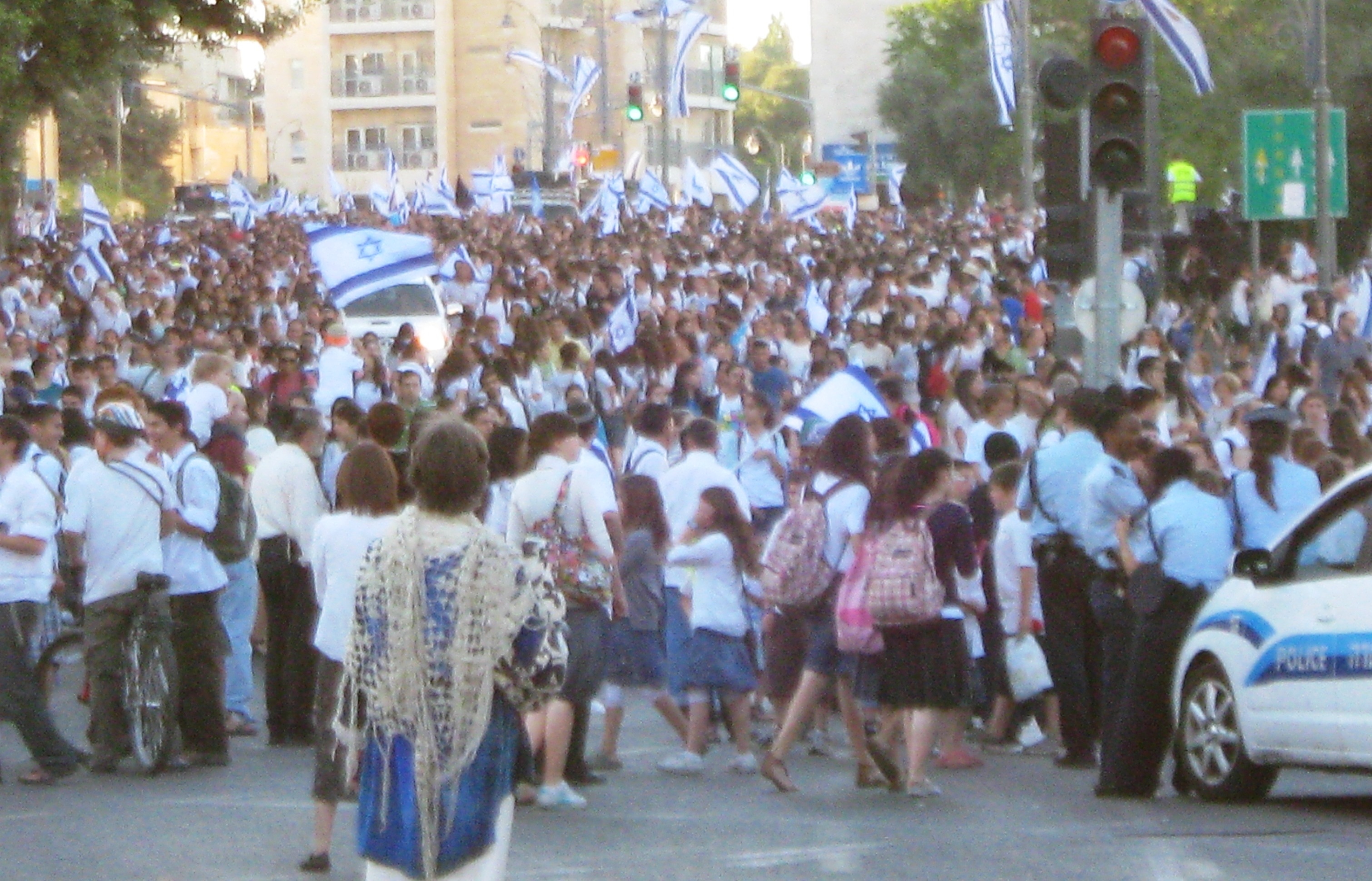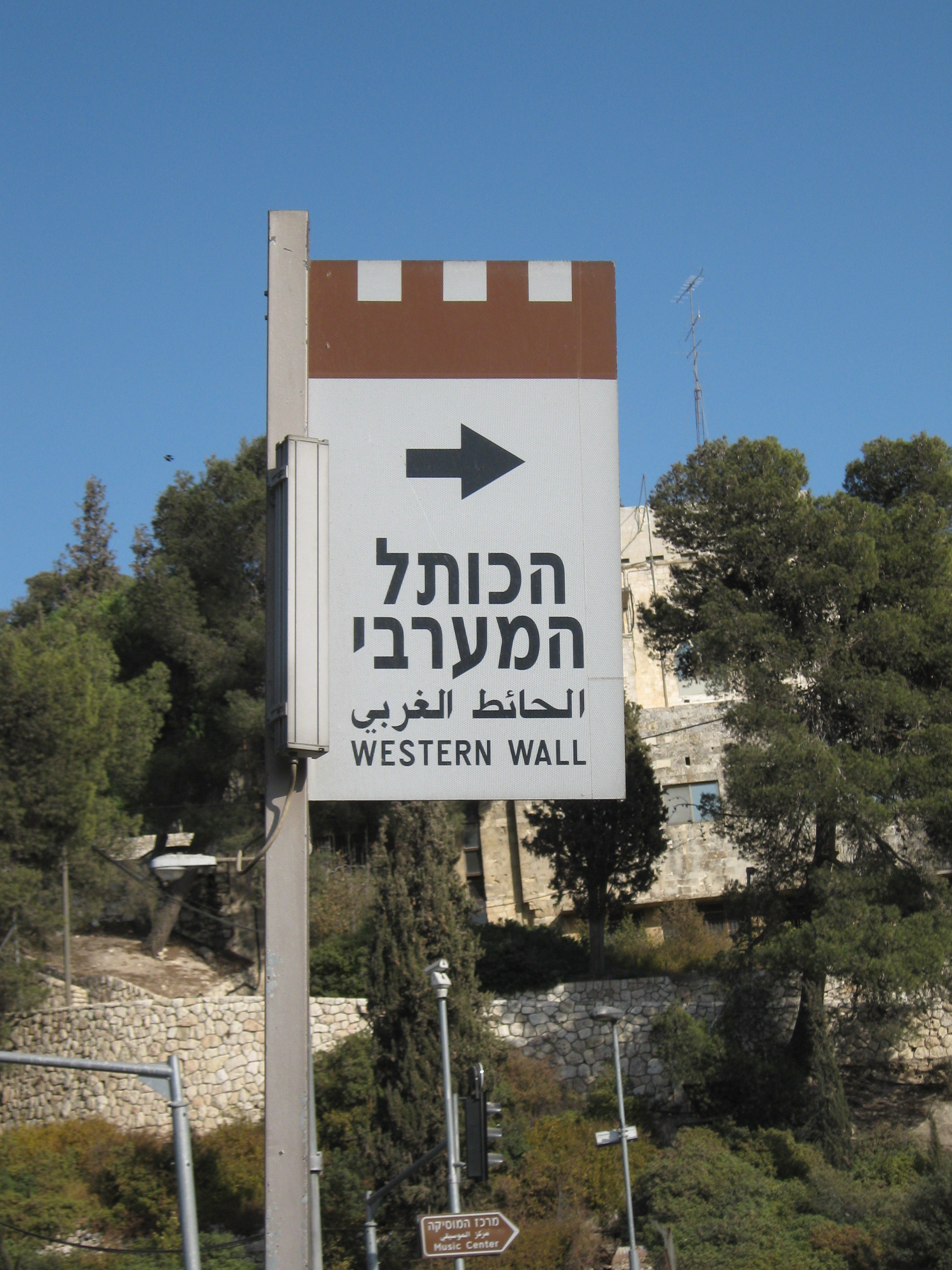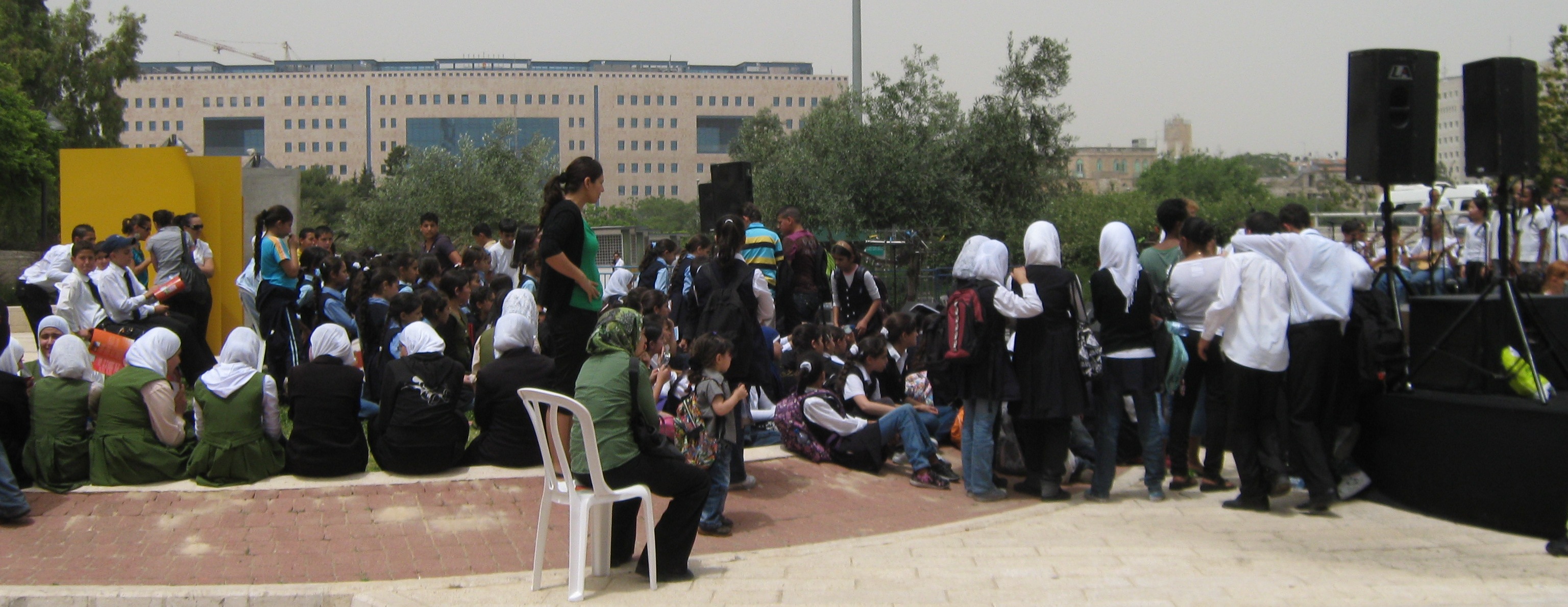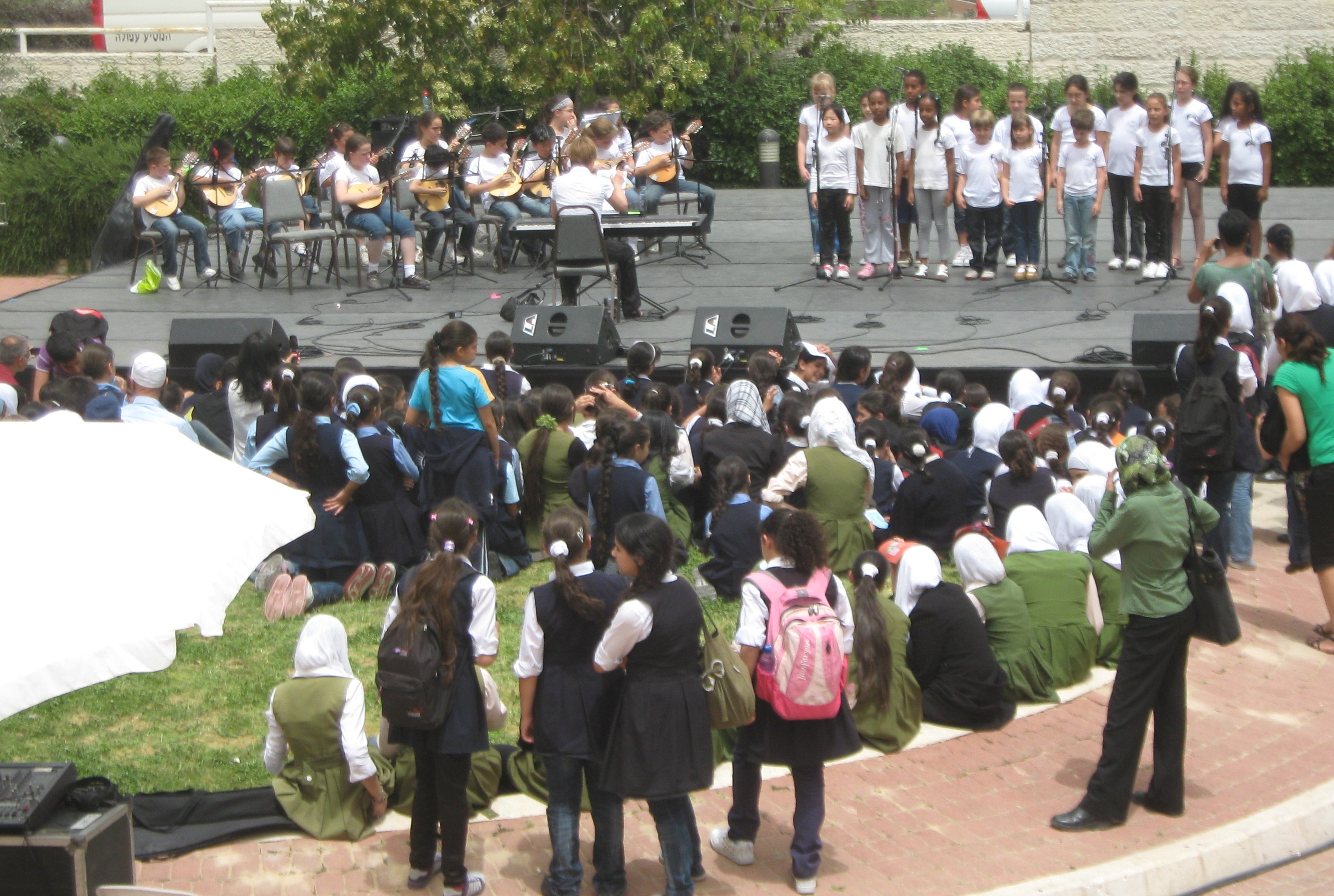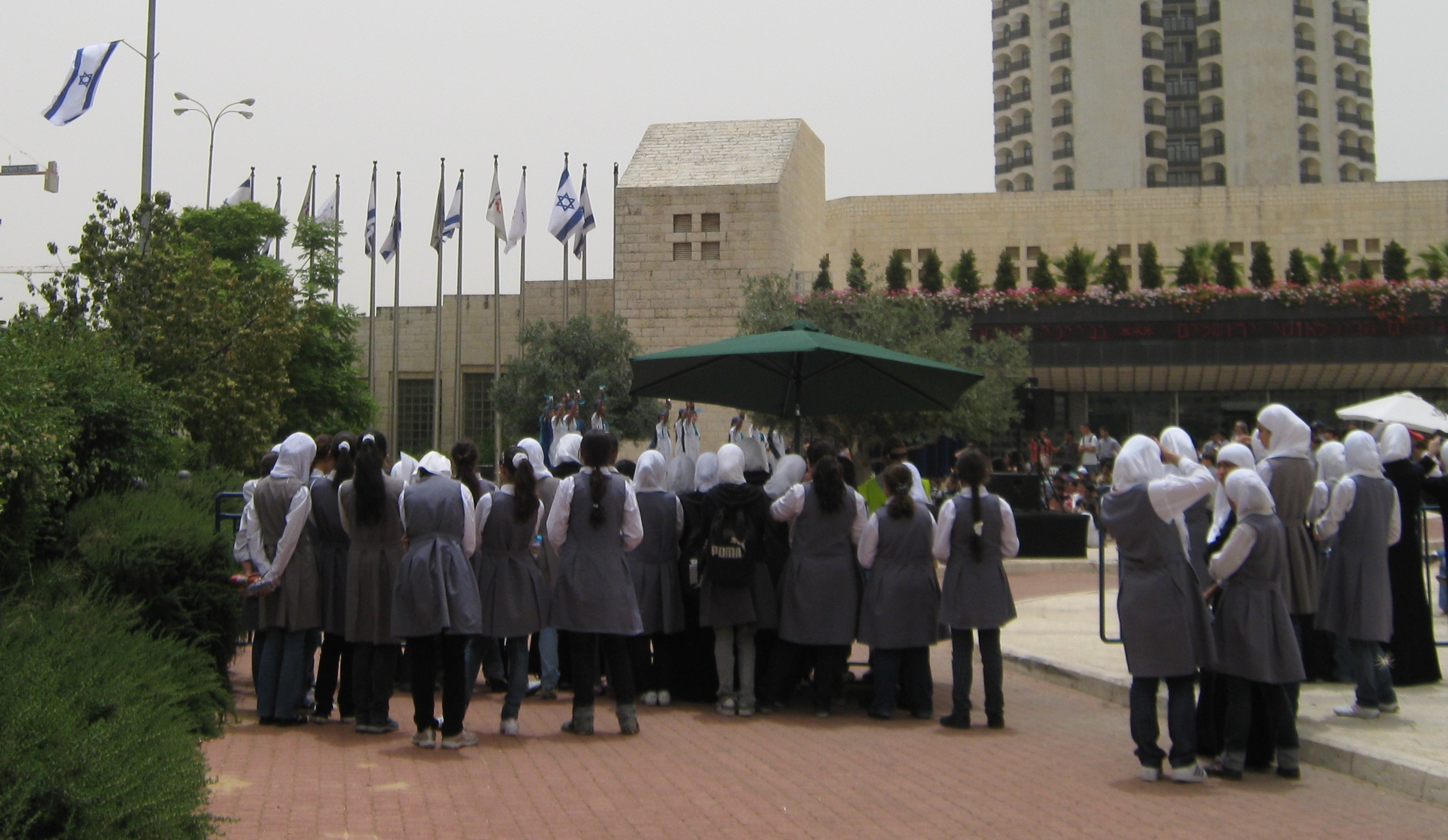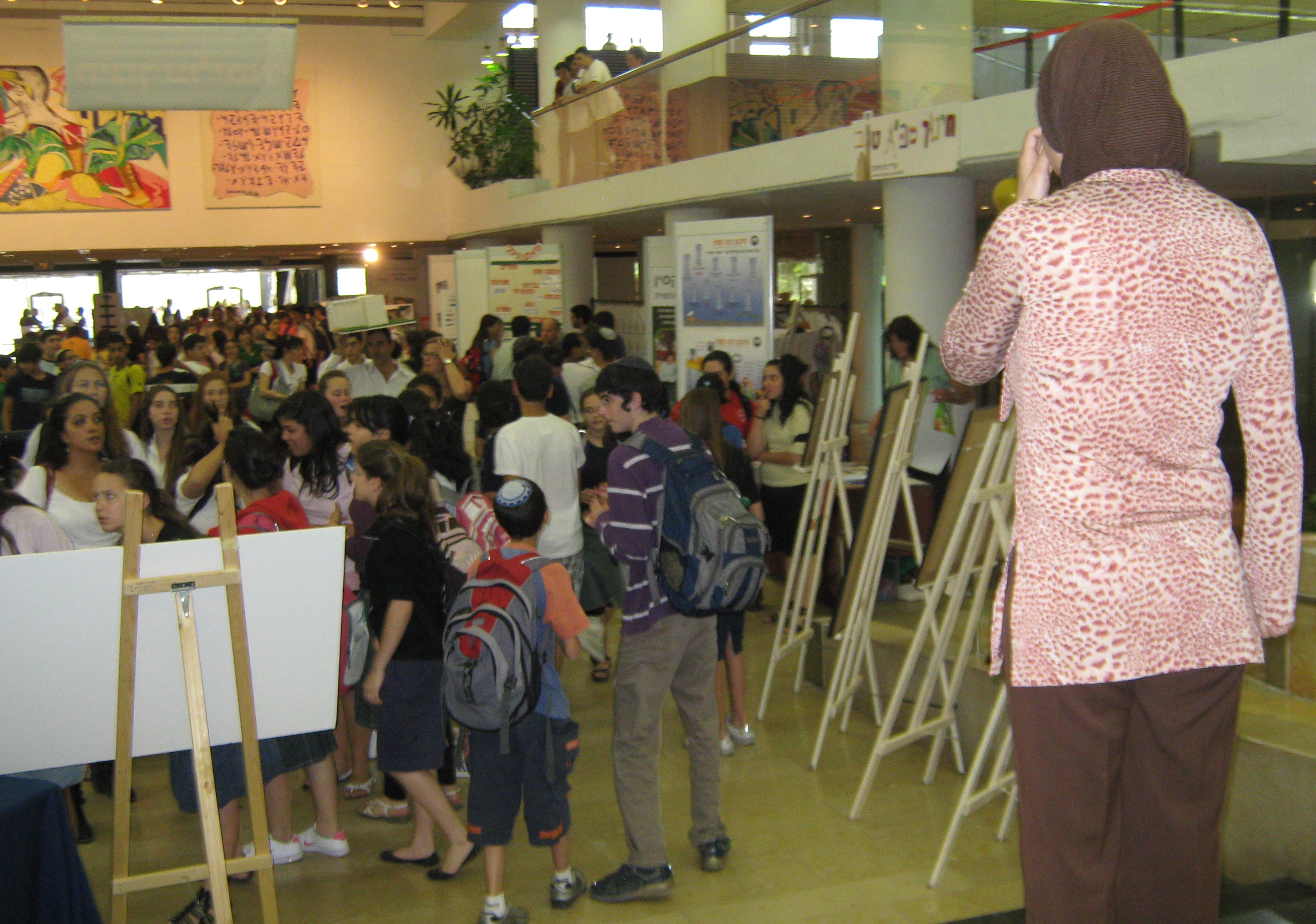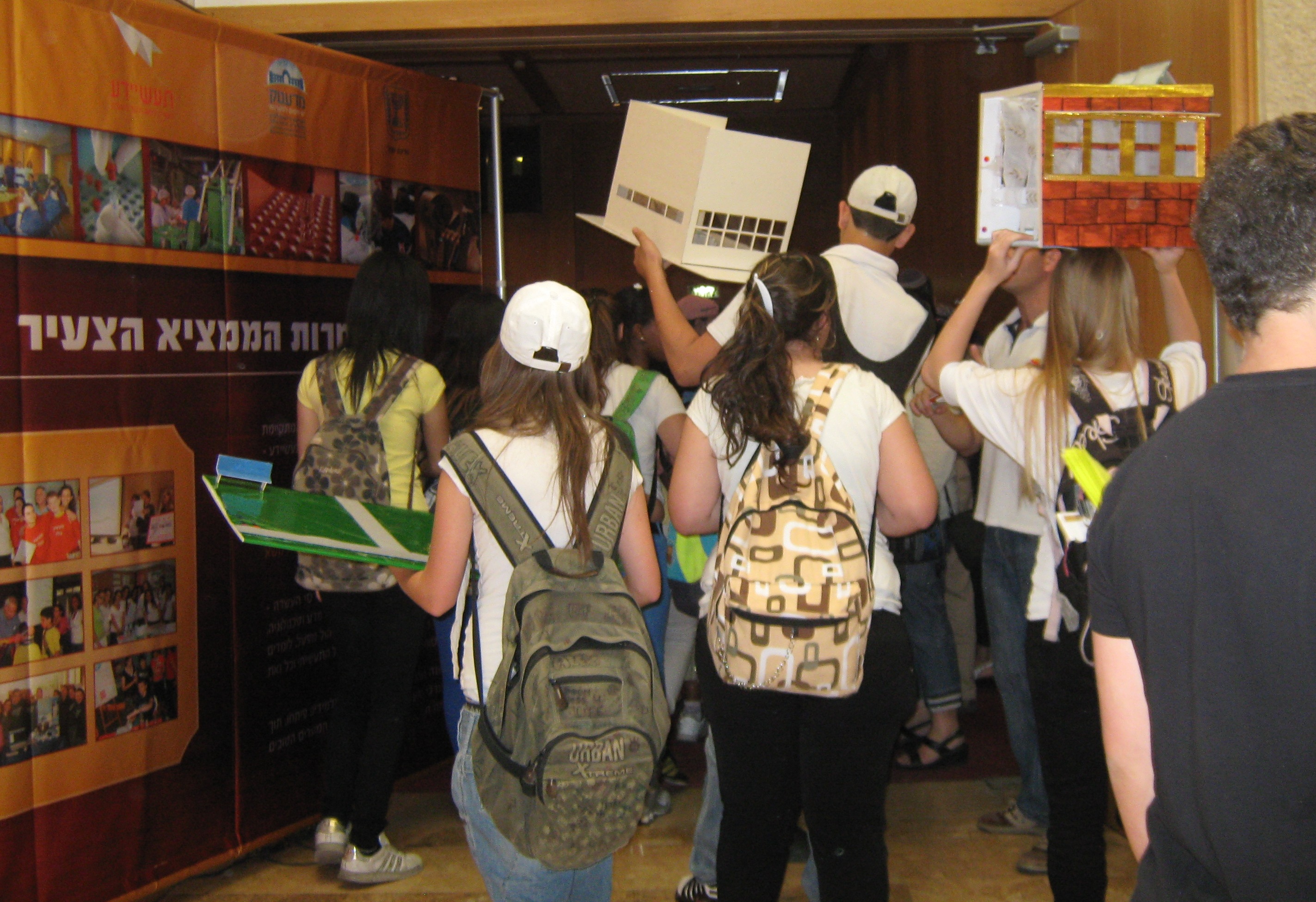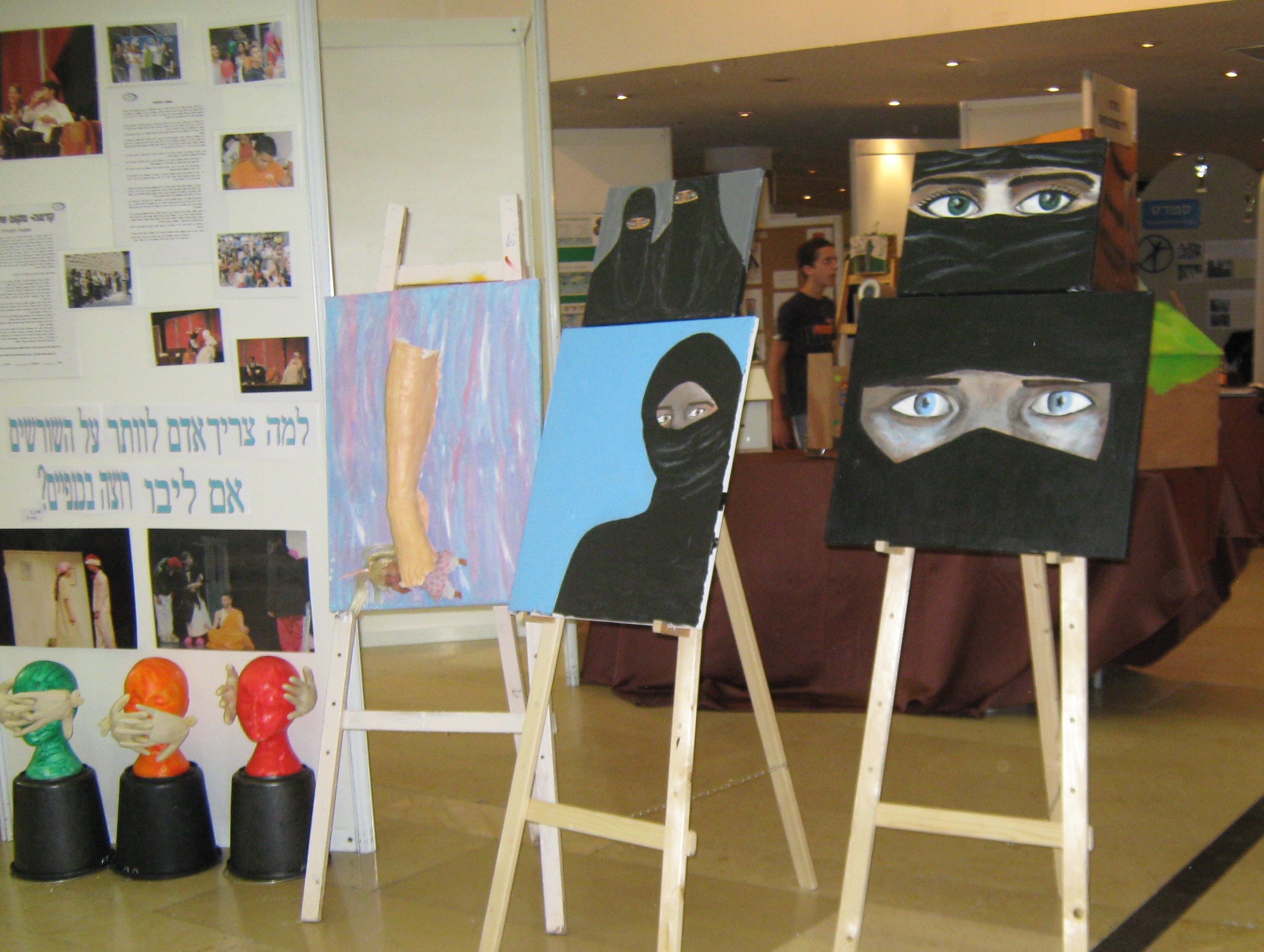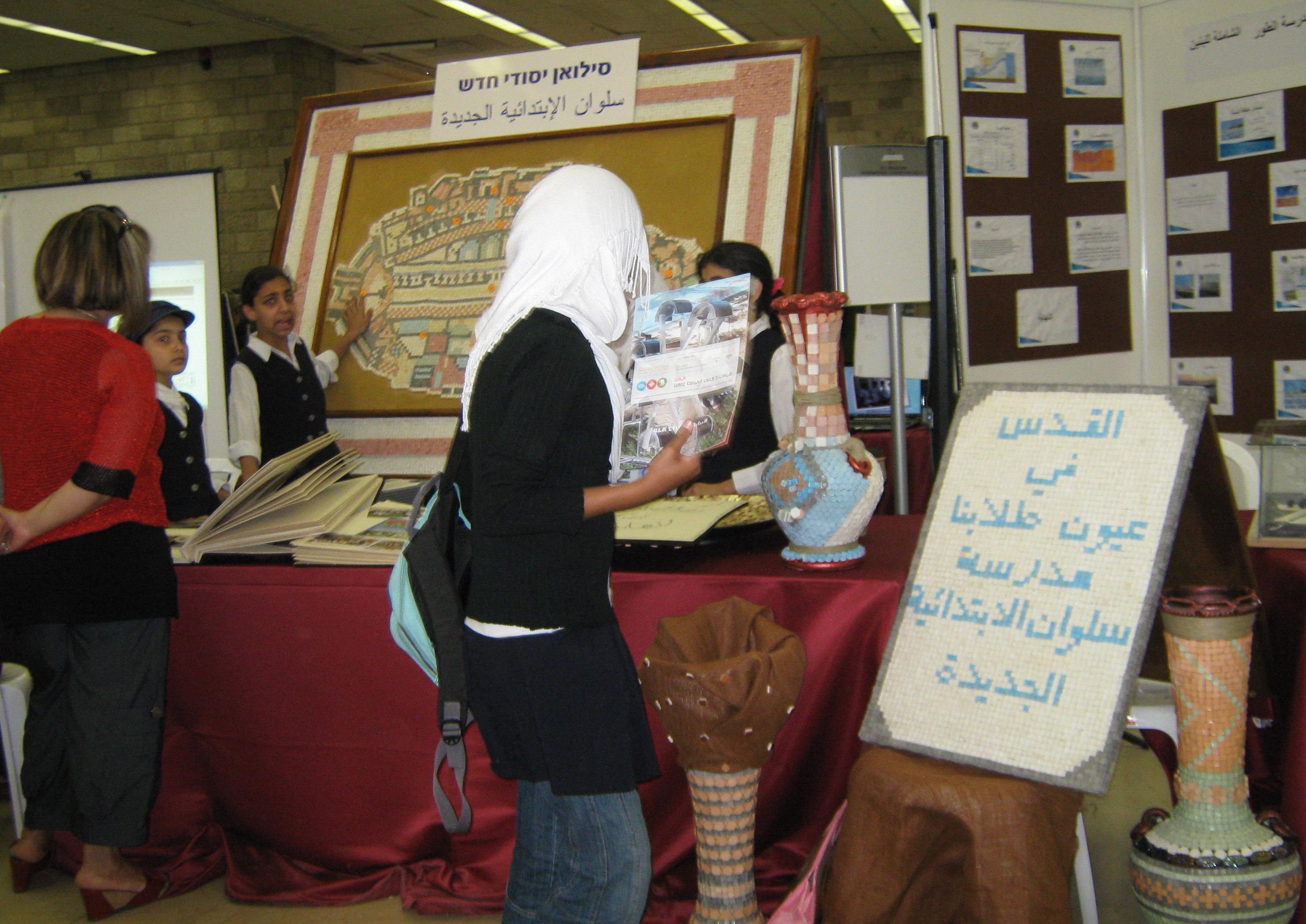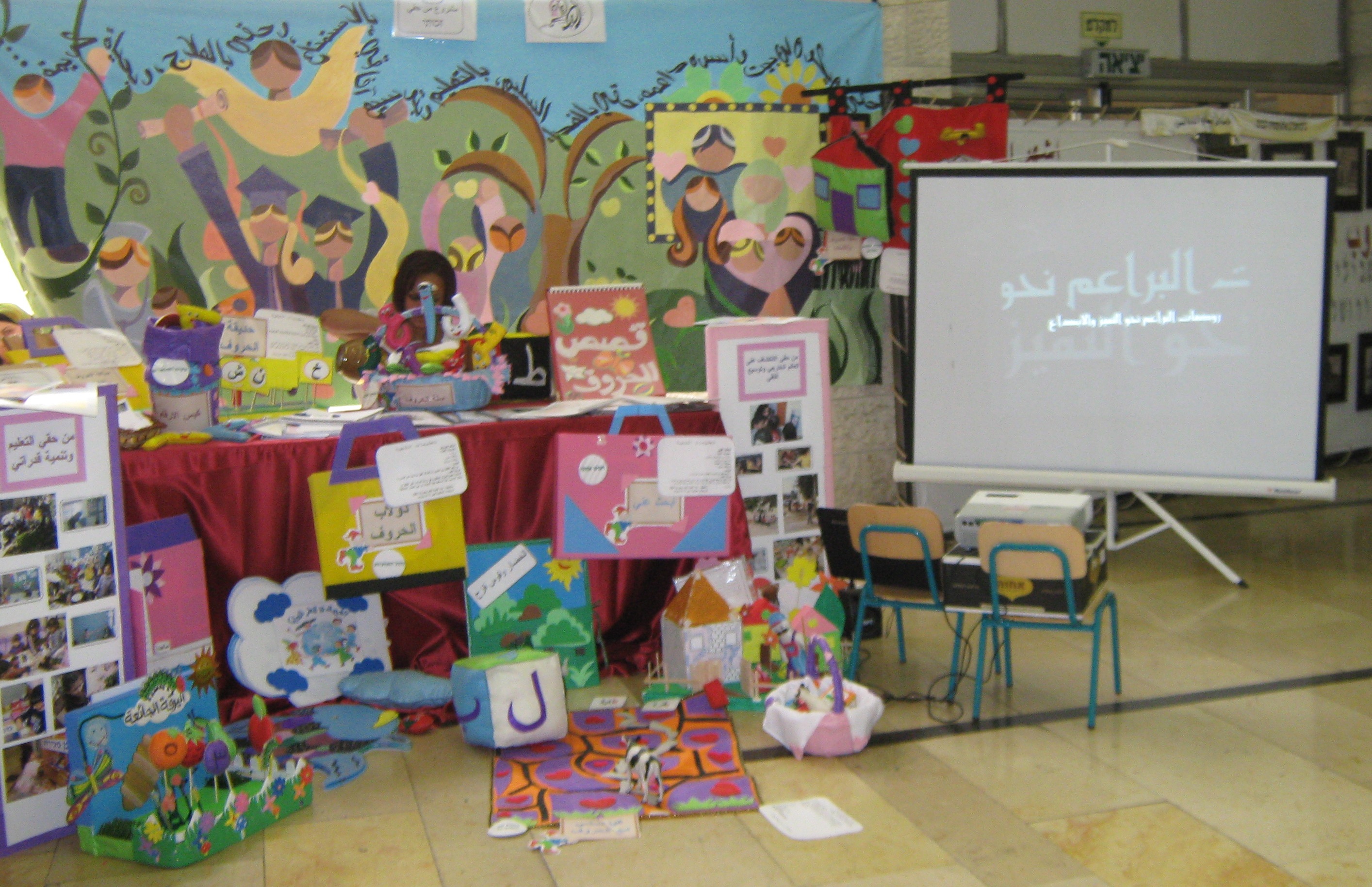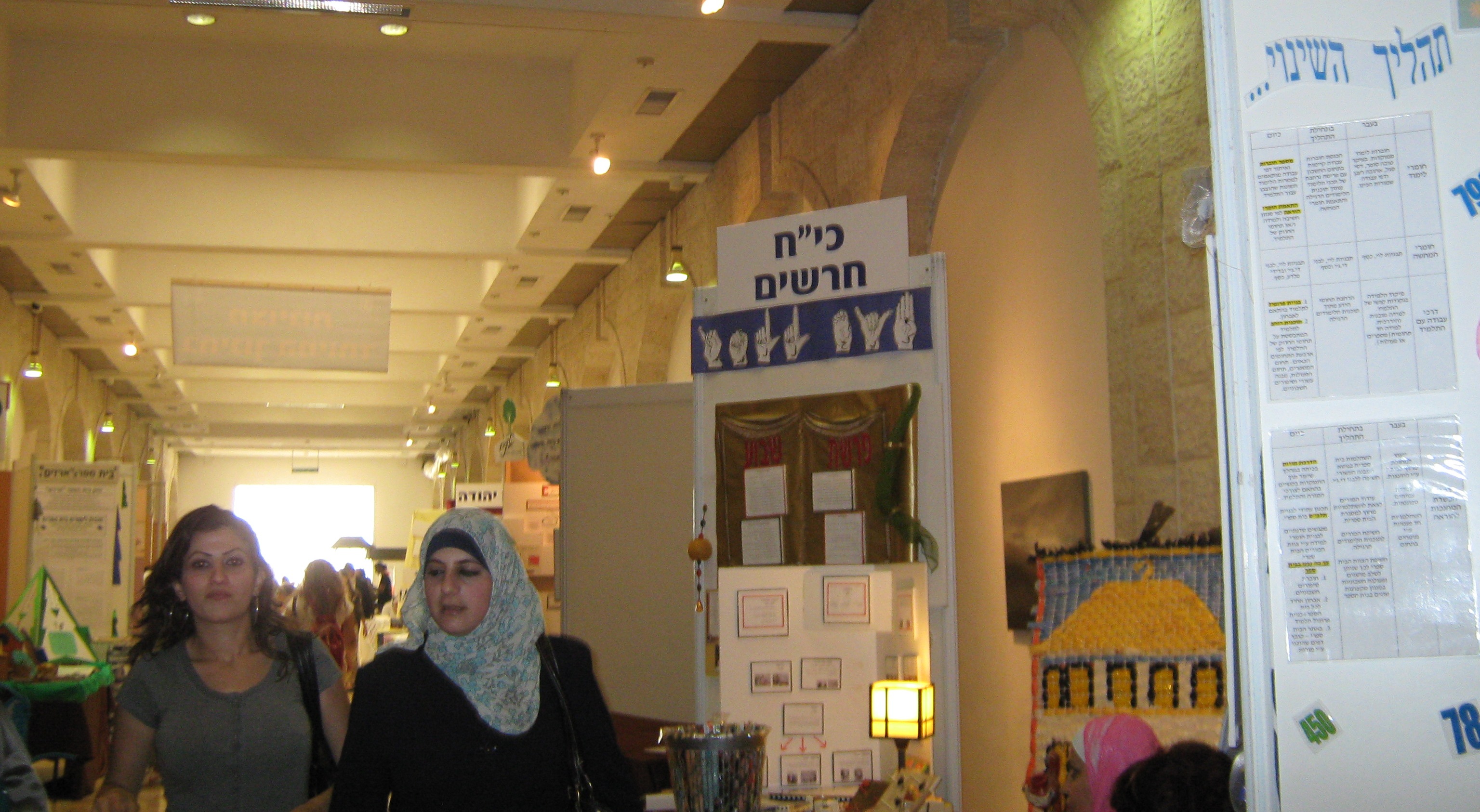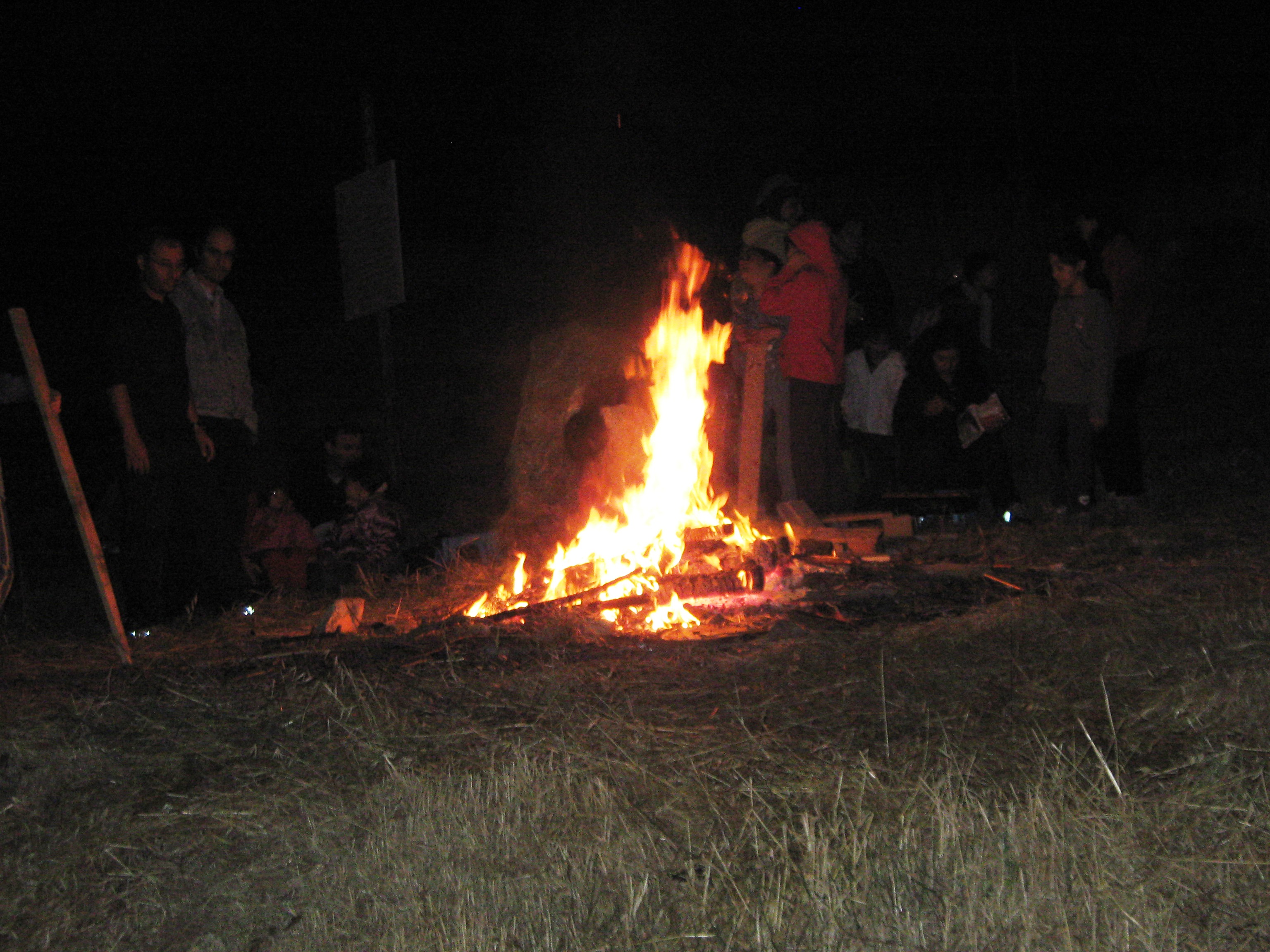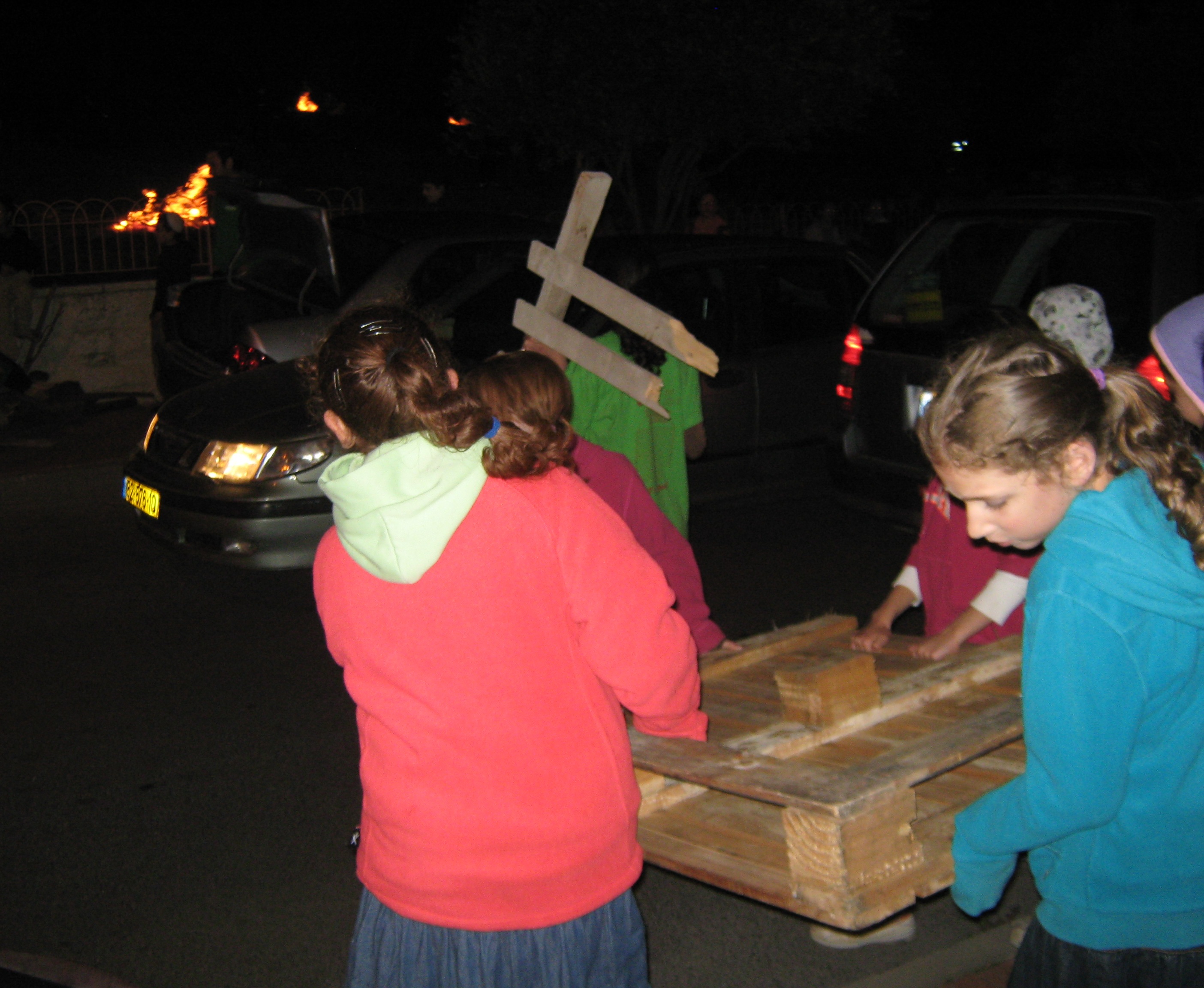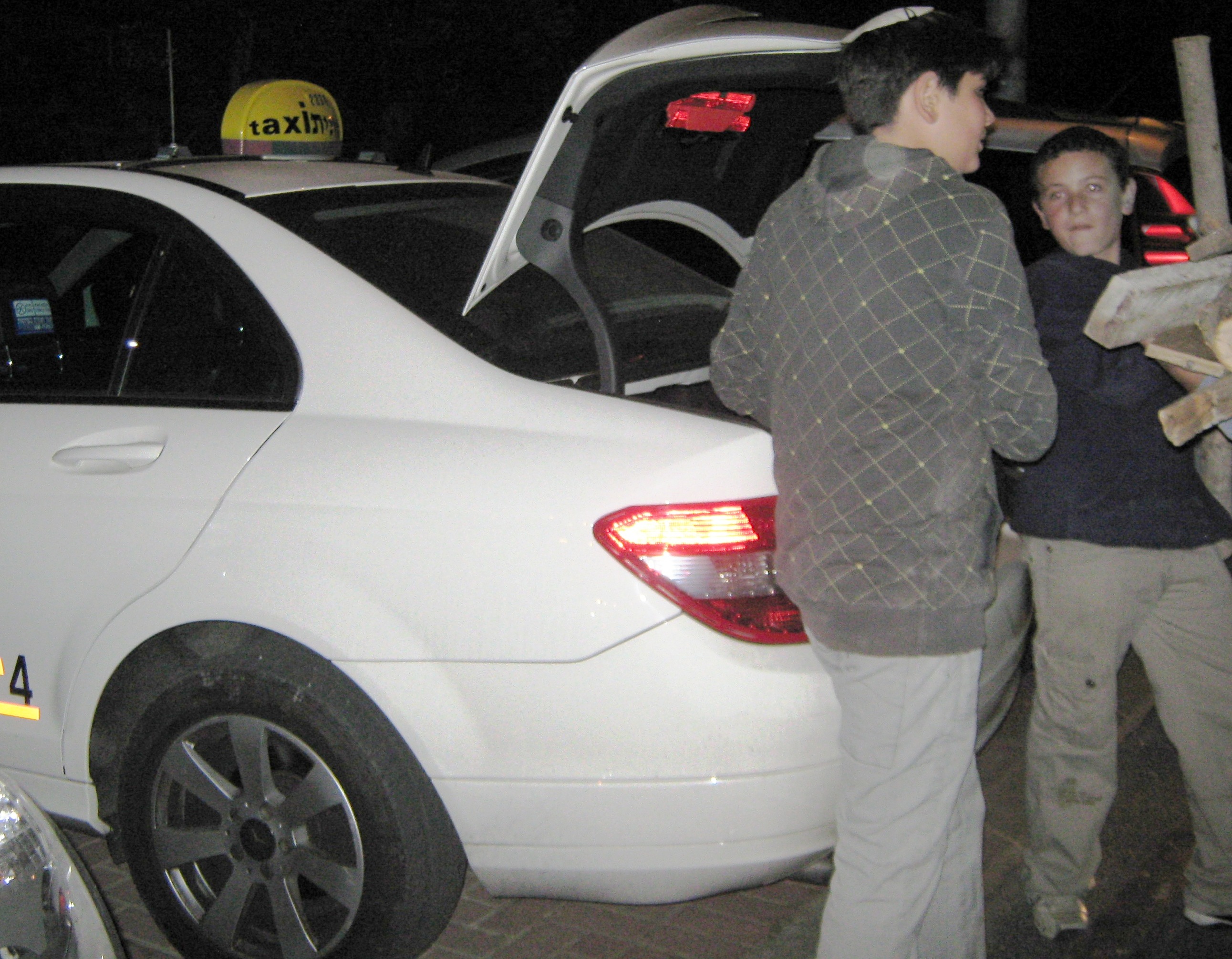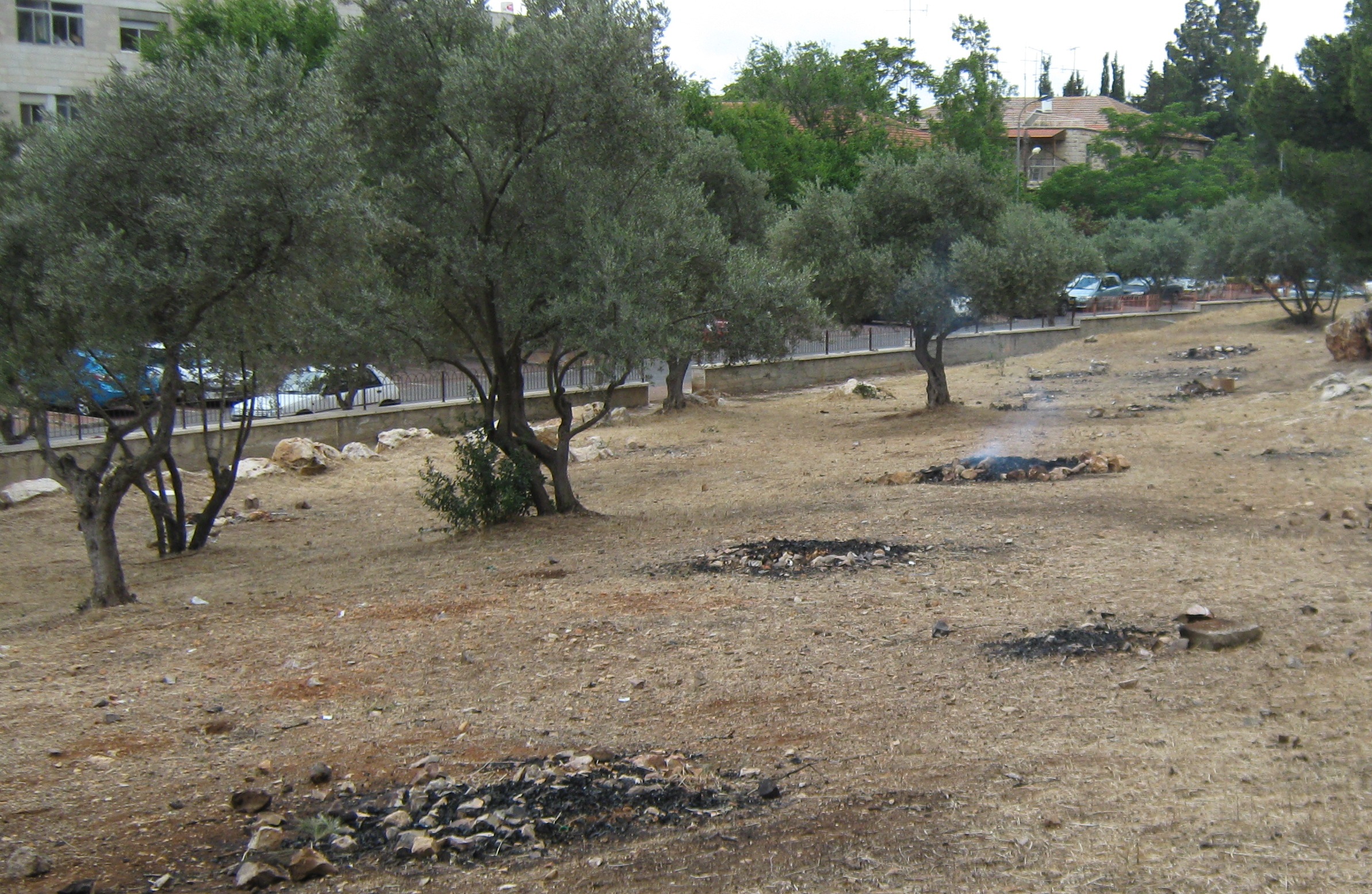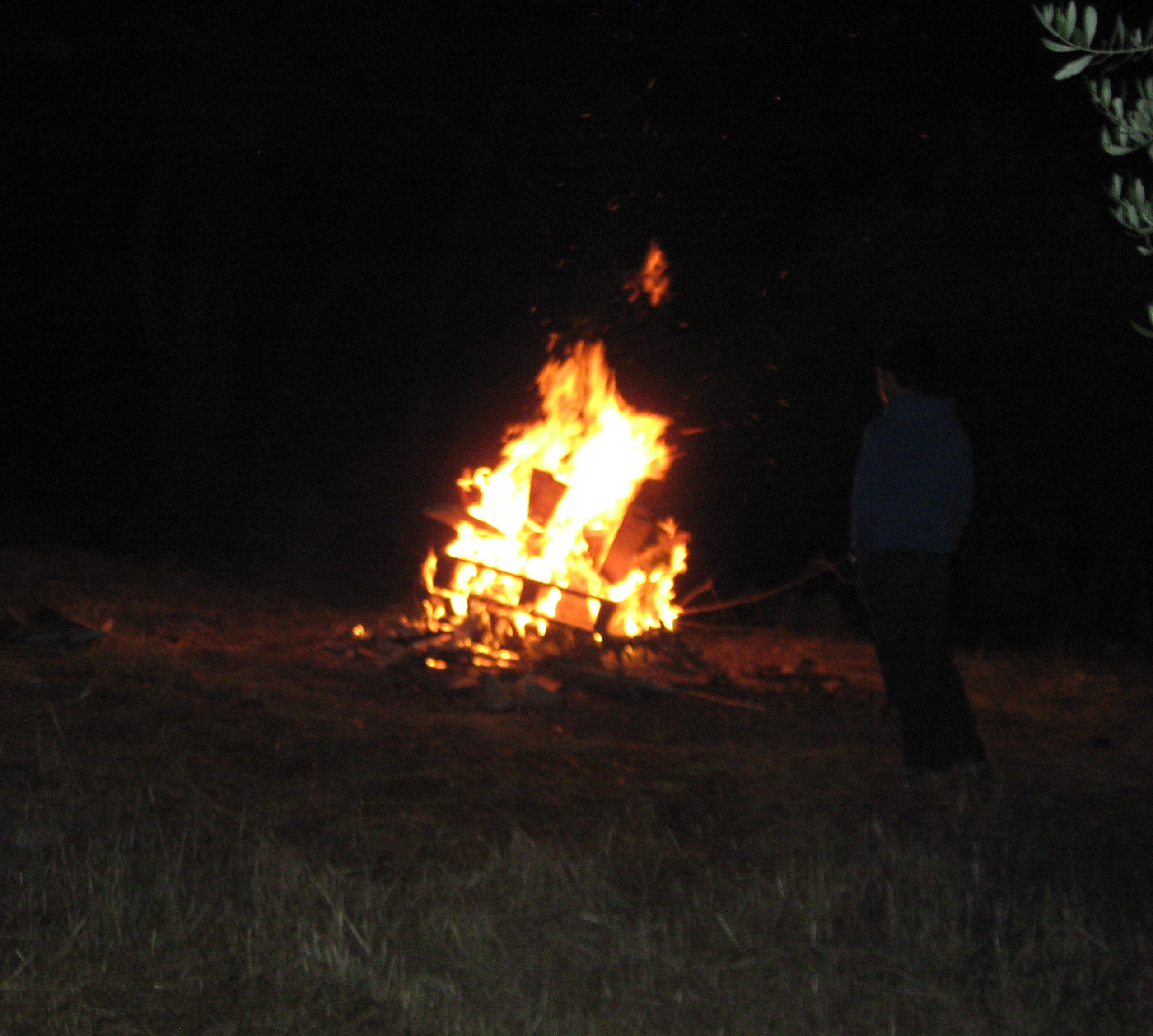On May 28, 1948 Jordanian troops entered the Old City of Jerusalem
and forced out the residents of the Jewish Quarter.
For 19 years the walls to the Old City could only be seen through barbed wire;
No Man’s Land divided the city.
Bullet holes can still be seen in the outer walls of the Old City.
In June 1967 Jerusalem was reunited and Jews returned to the Jewish Quarter.
For the past 43 years, 28 Iyar has been celebrated as Yom Yerushalayim, Jerusalem Day.
Celebrations are numerous and varied.

Plenty of blue and white and flags decorate the city.

Thousands of tons of equipment were installed in Gan Sacher for a musical extravaganza
which was enjoyed by thousands of people all night long.
Prime Minister Binyamin Netanyahu attended the large night-time gathering at Merkaz Harav Yeshiva.
At Yeshiva Hakotel in the Old City, evening prayers
were followed by dancing.
In the public area near the Hurva Synagogue a video about Jerusalem was shown.
Visitors came to the Old City and to the Kotel, the Western Wall, throughout the night.
The next day special classes and activities were held in schools.
In the afternoon, many streets in the center of town were blocked to traffic and a blimp hovered overhead,
as thousands of participants in the annual ‘Flag Dance’ Parade marched to the Old City.
Most marchers were young and ethusiastic.
They filled King George Street
and turned at Agron Street to go to the Old City.
The crowds and flags kept coming.
Celebrations continue with another
huge musical event in Gan Sacher tonight.
